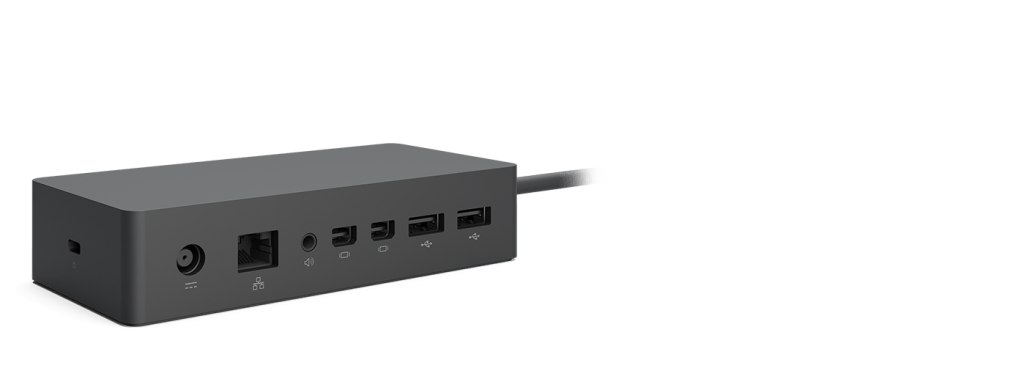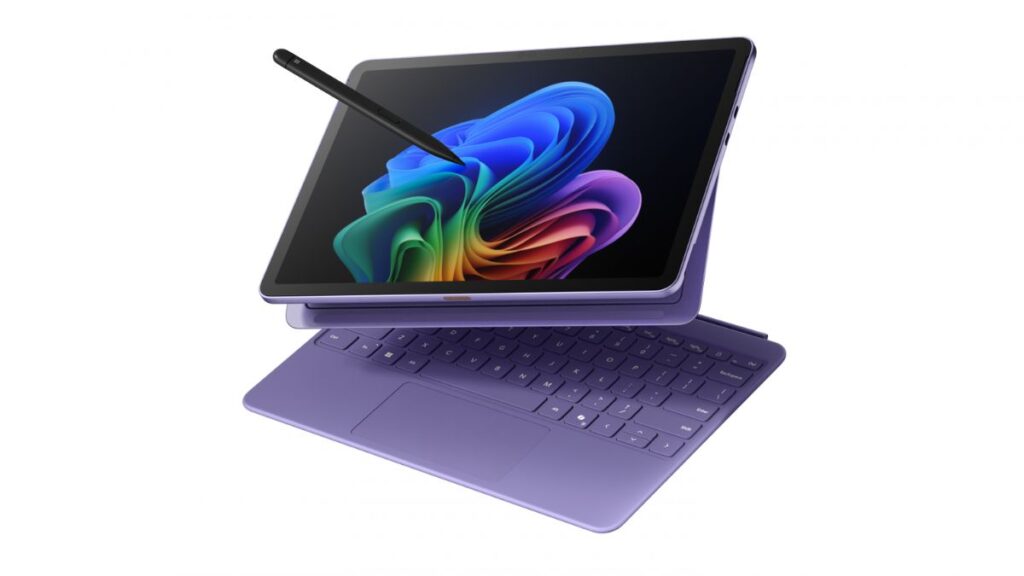One of the best things Microsoft unveiled at its Windows 10 devices event in New York was the new Surface Dock. Microsoft finally figured out how to separate the dock from the size of the tablet so that one dock can be used across a variety of different tablets or devices as long as they have a compatible connector.
I wrote this post about the Microsoft Surface Dock:
Microsoft invited the media to New York earlier this month to unveil an array of new hardware, including the Surface Book, Surface Pro 4, Lumia 950 and Lumia 950 XL smartphones, and the Microsoft Band 2 fitness wearable. One of the most exciting things that Microsoft announced, though, was an accessory for the Surface tablet line—the new Surface Dock.
Let’s start by taking a look at the new Surface Dock. It’s a rectangular black box—a little more than 5 inches long by almost two and half inches wide, and just over an inch tall. At 1.21 pounds it’s a tad hefty for its size, but it packs a lot of power. The Surface Dock has 2 mini DisplayPorts, 4 USB 3.0 ports, an audio out port, and a gigabit Ethernet port. It has a power port to connect the external power supply and it docks to the compatible Surface tablet models using the SurfaceConnect power port on the device.
What makes the Surface Dock awesome is that it’s compatible with both the new Surface Book and Surface Pro 4 even though they’re different size devices, and it’s even backwards compatible with the Surface Pro 3. That’s a significant change from the short yet chaotic history of past Surface tablet docks.
When Microsoft launched the original Surface Pro, one of my primary complaints was the lack of a docking station. It’s great to have a lightweight, portable, 2-in-1 hybrid PC when you’re on the go, but when I’m at my desk I like to use a full keyboard, mouse, monitor, etc., and I prefer the stability and speed of a wired network connection.
Microsoft fixed that issue by developing a dock with the Surface Pro 2 that was also backwards compatible with the original Surface Pro. The dock was somewhat unique compared with other docks I’ve used. If you had a keyboard cover on the Surface, you’d have to remove it and then place the tablet on the dock and slide the sides in until it locked in position.
The dock worked fine, but it had a design flaw that was its Achilles heel. It was engineered for a specific shape and size. When Microsoft rolled out the Surface Pro 3 it changed the power connector to the new SurfaceConnect port, and also changed the display size and aspect ratio. All of these changes were improvements over its predecessor, but also meant it couldn’t work with the existing dock.
Microsoft customers who invested in the first dock were upset that the accessory was already obsolete and they had to spend another couple hundred to upgrade the dock as well if they wanted to switch to the new tablet. There was some pushback from businesses reluctant to even consider the Surface tablet line for fear that the investment would be obsolete with the next model so Microsoft CEO Satya Nadella assured customers that all of the accessories would continue to work with future hardware.
See how Microsoft finally got the Surface Dock right at Forbes: Microsoft Surface Dock Is Built To Be Future-Proof.
- Rethinking Cybersecurity in the Age of AI and Digital Twins - August 25, 2025
- 10 Clever Tech Gadgets Every Student Will Actually Use - August 21, 2025
- The Evolving Face of Ransomware — and How We Can Stay Ahead of It - August 15, 2025



